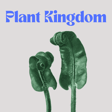
Nicole Yamase: The ocean is a mirror
Micronesian marine botanist and ocean advocate Dr Nicole Yamase meditates on the Pacific with a conversation spanning Hawaiian seaweeds, snorkelling across the Federated States of Micronesia and her submersible expedition to the Mariana trench. She generously shares her cultural perspective as a Micronesian scientist and discusses what lessons she’s learned from the sea.
Bio:
Dr. Nicole Yamase is from the islands of Pohnpei and Chuuk in the Federated States of Micronesia (FSM). Although she is from the FSM, she spent parts of her childhood in the Republic of Palau and Saipan in the Commonwealth of the Northern Mariana Islands. She obtained her Ph.D. in Marine Biology from the University of Hawaiʻi at Mānoa focusing on the ecophysiology of native Hawaiian macroalgae. Nicole is the Director of Impact for OneReef, a non-profit organization that supports community-led ocean management. Through her job, she works closely with local communities and scientists to define, measure, and communicate impact in a meaningful way that interweaves both science and traditional knowledge.
This conversation is hosted and produced by Catherine Polcz with music by Carl Didur.


